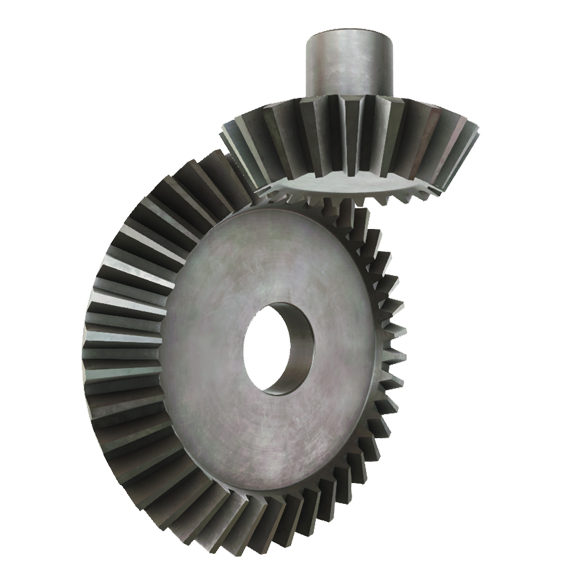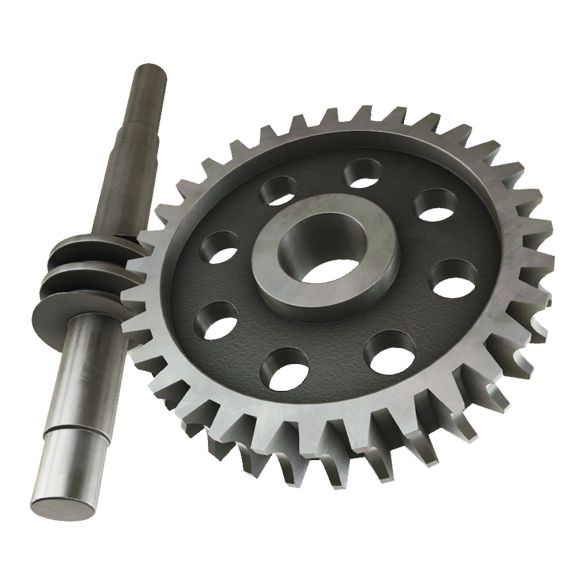Industrial Gear Box Gear Types
Industrial gearbox gears transfer power between a system and allow for a wide variety of speeds/loads to be achieved for a fixed range of input speed/loads. They come in many unique designs and materials depending on the application.
Gearbox Gear Types

Spur Gears
Spur gears are the simplest type of gear. They have straight cut teeth that are aligned parallel to the axis of rotation and therefore exhibit rolling contact. They give a simple and effective way to transmit power. Changing the number of teeth on each gear allows for a wide range of speeds and torques to be created. The loads and speeds between these meshing gear teeth can be very high and it’s the job of the lubricant to form a protective layer preventing the surface asperities (microscopic surface peaks) of the teeth coming together. Failure to protect against this will cause damage to the gears and therefore the application they are running in.

Bevel Gears
Bevel gears allow power to be transmitted to a different plane by using cone shaped gears that are perpendicular to each other. The angle between the shafts can be anything between 0 and 180 degrees. Bevel gears come in three main types: straight, spiral, and hypoid. Straight and spiral relate to the angle of the teeth, and they have much the same differences as helical gears do to spur gears.
- Straight Bevel Gears: As the name infers and like spur gears, straight bevel gear teeth are straight, tapering off from the base to the top of the cone shape. t
- Spiral Bevel Gears: Spiral bevel gears have helical teeth, Allowing for smooth contact between teeth on an intersecting gear.
- Hypoid Bevel Gears: Hypoid bevel gears are like spiral bevel gears, except they work with offset gears.

Helical Gears
The teeth of helical gears are cut at an angle to the axis of rotation. The angled teeth engage more gradually than spur gear teeth and experience both rolling and sliding contact. This more gradual interaction allows a smoother and quieter operation than spur gears. The angled teeth provide a larger contact area and are therefore able to transmit a larger force. Helical gears produce an axial force and are used in high-speed applications, large power transmission, or where low noise levels are important.

Worm Gears
Worm gears consist of a shaft with a spiral thread that engages with and drives a toothed wheel. They are designed to be used in industrial applications when high torque and a reduced speed is required. Their design allows for large gear ratios that other gear types cannot achieve. Due to this design, a high amount of sliding motion occurs between the gears, meaning the lubricant must provide a high level of protection and lubricity to keep the system operating as it was designed.

Epicyclic or Planetary Gears
Epicyclic or planetary gears are made up of multiple gears arranged with a central gear meshing with several mid-gears that in turn mesh with an outer ring gear. This configuration allows for multiple gear ratios and directions to be achieved in a compact package. Tooth protection, system efficiency and cooling are some of the key jobs for the lubricant within an epicyclic gear. Industrial epicyclic gearboxes can be complex with many rotating parts. Failure to protect these components with the incorrect lubricant can be costly and time consuming.
See related posts below to learn more.